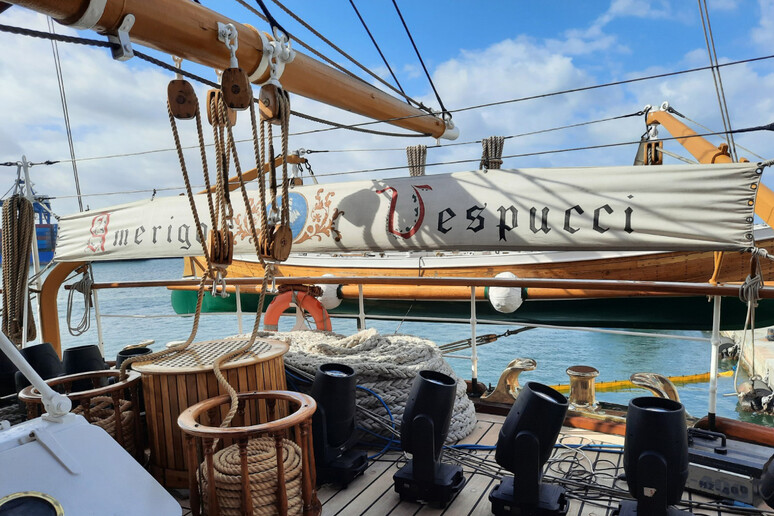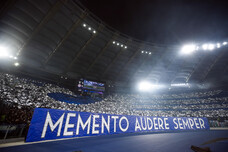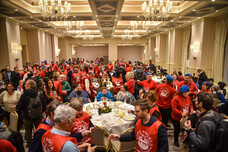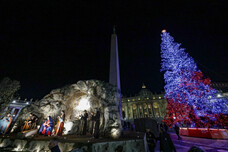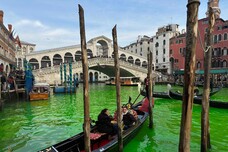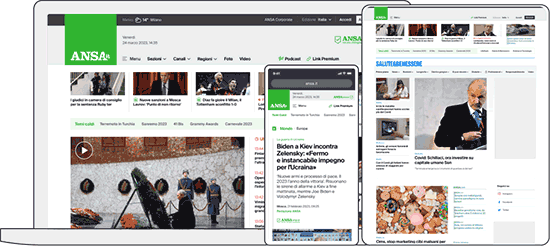by Rodolfo Calò
Big helms that can only be
moved by 16 robust arms, a Leonardo da Vinci motto as moral
guide, mooring lines made one century ago and a small bell
turned by dried salt into a symbol of the months spent at sea:
the Amerigo Vespucci, the Italian Navy's training vessel which
is an ambassador of Italy's excellence, represents this and many
other interesting aspects for those who will want to visit it
during the imminent series of stages scheduled in Italy to
complete its two-year-long world tour.
A sentence by Leonardo da Vinci meets the visitor's eye on deck
- "Constancy does not begin, but is that which perseveres" -
written in metallic letters over wood.
As explained to ANSA by Commander Giuseppe Lai, after docking in
Alexandria, Egypt, the motto "suits" the figure of Vespucci: he
recognized that the lands discovered in South America were not
part of Asia but of a new continent (which was in fact named
after the cartographer and explorer, "Amerigo").
"A conclusion not reached by Columbus" even though he had the
"courage" to "sail westwards" dealing with "something no one had
ever challenged", noted the Commander.
"Great results can be obtaining through study and perseverance",
according to the "message" of the training vessel Vespucci, as
summed up by Lai, who will lead the tall ship to the ports of 14
Italian cities from March to June.
Objects on board include an ashtray shaped like a rostral bow
with a figurehead which dates back to "when it was possible to
smoke on board", which is now closed, said Lai, pointing instead
towards several "dancers", or smooth edge protectors built not
to ruin mooring lines.
There is also an "historic wheelhouse" located on the "stern
bridge" where the vessel is skippered with four mechanical helms
that require the strength of eight men and an "hydraulic" system
that can be steered by just one person.
The same area includes a modern electronic system with a radar
which is sometimes deactivated to teach cadets how to deal with
an emergency.
Like in a movie, it is possible to attempt "fixed maneuvers"
that keep the tree in position and which, with a "ratline",
create those sort of steps used by cadets to reach the sails.
It is possible to move amid capstans that are as big as barrels,
which require the strength of eight people with wooden poles
during mooring maneuvers, and amid mooring lines made in
vegetable fibers.
"They are made by a company in Castellammare di Stabia" in a
traditional manner, "like many years ago", stressed the
commander.
On the "quarterdeck" it is possible to see up close the boats
that are used "to train cadets in rowing and sailing": their
"primary function" is not to be used as lifeboats, which are
instead "inflatable vessels" placed inside black and yellow
containers.
On the bow, also known as "forecastle", which offest the best
view, are located the chains and anchors.
There are also two small cannons for the "military honours" paid
during official visits, like one from a head of State.
The same area also has the ship's only bell that is not as shiny
as the rest of the brass: it is opaque in Alexandria because it
is only shined "after returning from a long trip and before
departing" and "thus gives the idea of how much time has
passed", explained Lai.
It was shined the last time at La Plata, in Argentina, where the
"first part" of the world tour ended.
ALL RIGHTS RESERVED © Copyright ANSA
